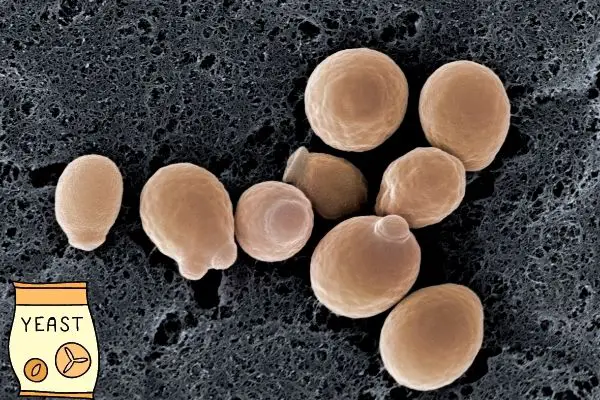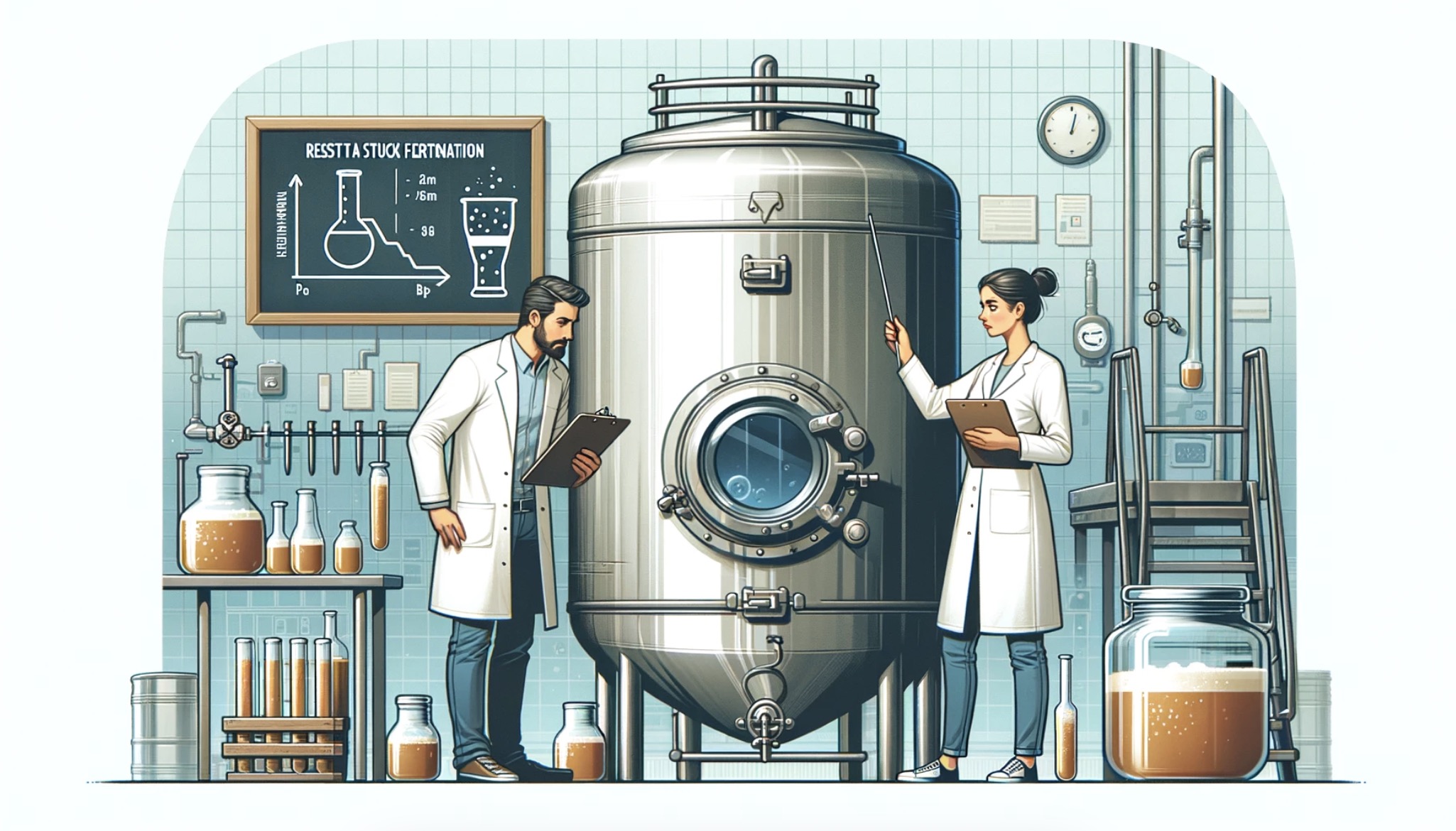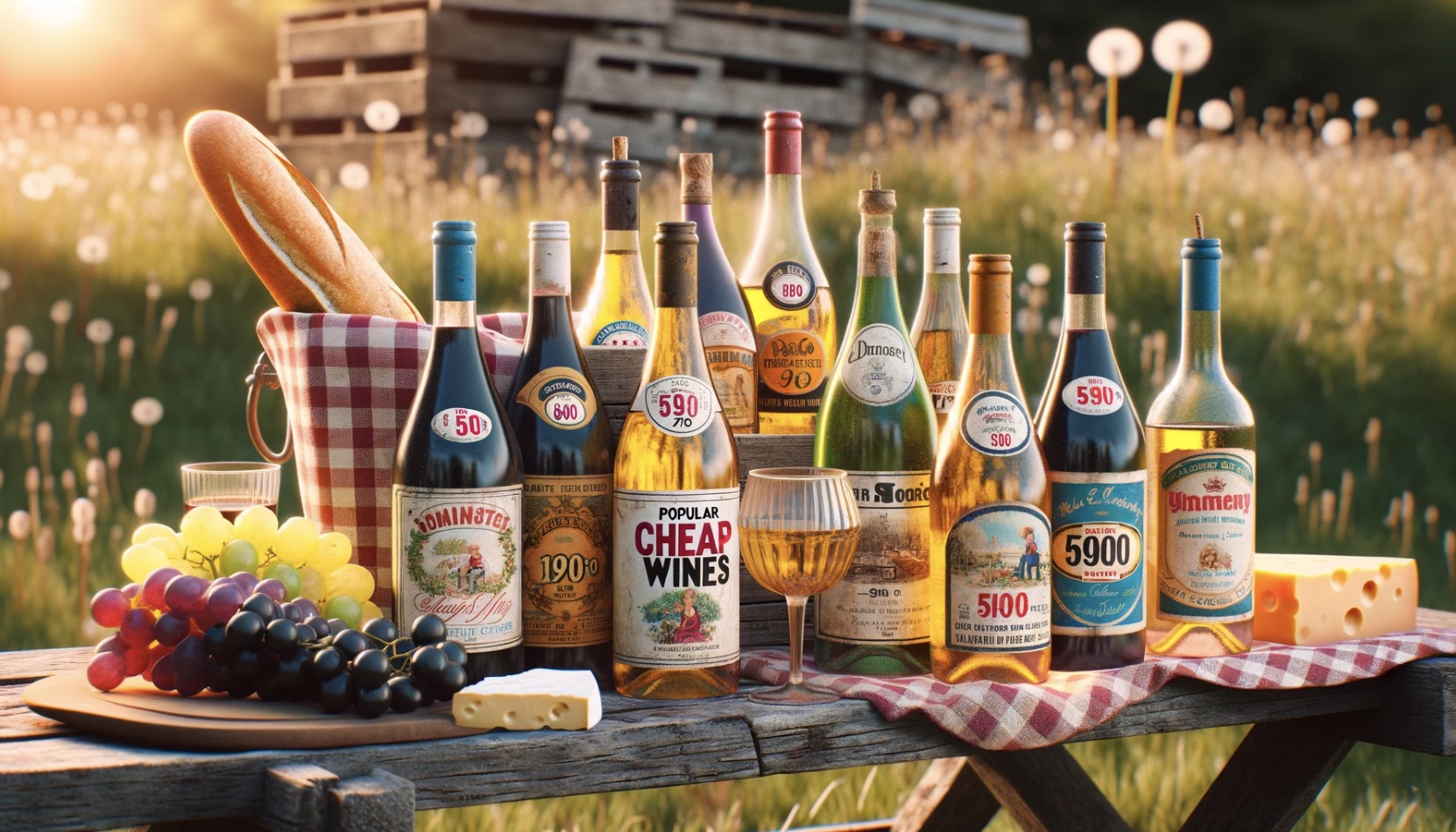As a brewer, I’ve been asked many times about the temperature needed to kill yeas in winemaking.
Understanding the right temperature for yeast is critical because it’s the main driving force behind fermentation process.
When the temperature is too high, you risk killing the yeast, and when it’s too low, the yeast may become inactive.
Most yeast strains used in wine dies at approximately 120°F (49°C). This is known as the thermal death point of yeast. However, their growth halts already at lower temperatures at around 40C (104F).
When yeast is exposed to temperatures higher than this, it will begin to die off rapidly, precipitate, and your wine will clear.
However, just because yeast can survive up to 120°F doesn’t mean that’s the optimal temperature for yeast activity in wine making. In fact, most yeasts perform best at much lower temperatures.
Understanding Yeast and Fermentation
Yeast, a microscopic single-celled organism, is one of the most important ingredients in wine making.
During the fermentation process, yeast consumes sugar and converts it into alcohol and carbon dioxide, transforming grape juice into wine.
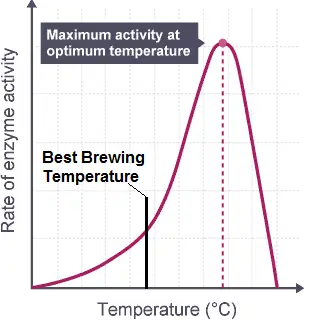
In order to do this effectively, yeast requires a certain temperature range. Most yeast strains used in wine making prefer temperatures between 70°F and 85°F (21°C and 29°C).
When the temperature is within this range, yeast will reproduce and ferment most efficiently.
The Impact of Temperature on Yeast Activity
Temperature plays a crucial role in the activity and health of yeast. The various stages of fermentation – lag phase, exponential phase, stationary phase, and decline phase – are all influenced by temperature.
In the lag phase, yeast adapts to the environment and begins to consume sugar. During the exponential phase, yeast reproduces rapidly and ferments most aggressively.
The stationary phase is when yeast activity starts to slow down as the sugar is used up. In the decline phase, yeast cells begin to die off.
Each of these stages can be influenced by temperature. Lower temperatures generally slow down yeast activity, prolonging each phase, while higher temperatures speed up yeast activity, potentially causing fermentation to finish too quickly.
The Dangers of High Temperatures
In addition to killing yeast, high temperatures can also cause other problems in wine making. Yeast can produce off-flavors and aromas when exposed to high temperatures, potentially ruining the wine.
Also, yeast cells stressed by heat may undergo autolysis, a process where they break down and release their contents into the wine. This can result in off-flavors and a cloudy appearance.
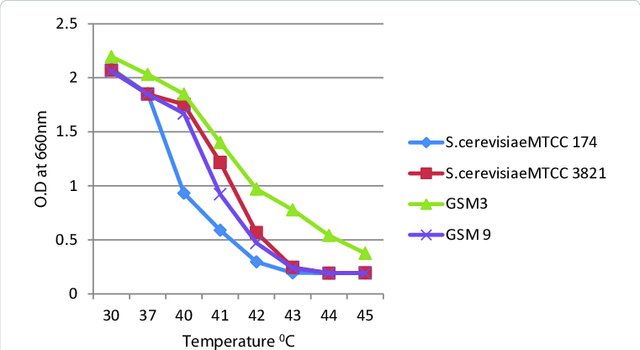
In the graph above, we can see that most yeast die out and precipitate (optical density decreases) at above 42C (107F).
The Benefits of Cool Fermentation
While high temperatures can be detrimental, lower temperatures can actually be beneficial in many cases. Cool fermentation, between 50°F and 60°F (10°C and 15°C), is often used for white wines and some types of red wines.
Cool fermentation can enhance the aroma and flavor complexity of the wine. It also allows for a slower, more controlled fermentation, which can improve the quality of the wine.
Cold Crashing to Clear Wine
Cold crashing is a post-fermentation technique used to clarify wine by rapidly reducing its temperature. This process involves lowering the temperature of the wine to near-freezing levels for a short period, typically a few days to a week, before bottling or transferring to another vessel.

Cold crashing is particularly useful for white wines and certain red wines that benefit from a clearer appearance and improved stability.
The Clarification Process:
After fermentation, wine often contains suspended particles such as yeast cells, proteins, and other solids. These particles can cloud the wine’s appearance and potentially lead to off-flavors or haze over time. Cold crashing encourages these particles to settle at the bottom of the fermentation vessel through a process known as sedimentation.
Enhanced Clarity and Stability:
By reducing the temperature during cold crashing, the solubility of solids and proteins in the wine decreases, causing them to bind together and precipitate out. The result is a clearer and visually appealing wine. The enhanced clarity not only improves the wine’s appearance but also reduces the risk of sediment forming in the bottle over time.
Preserving Aroma and Flavor:
One of the significant advantages of cold crashing is that it can help preserve the delicate aromas and flavors of the wine. During the clarification process, cold temperatures slow down any remaining fermentation or microbial activity, reducing the risk of undesirable chemical reactions that could impact the wine’s character.
Controlled Microbial Stability:
Cold crashing can also contribute to microbial stability, helping to inhibit the growth of any remaining yeast or bacteria that might cause refermentation or spoilage in the bottled wine. This is particularly important for wines that will not undergo pasteurization or sterile filtration.
Cold Crashing Process:
The cold crashing process is relatively straightforward. Once fermentation has completed and the desired level of sweetness or dryness is achieved, the winemaker cools the wine rapidly to the desired temperature range, usually between 32°F and 40°F (0°C and 4°C). It’s crucial to monitor the temperature carefully to avoid freezing the wine, which could lead to structural damage or loss of flavors.
Timing and Duration:
The timing and duration of cold crashing can vary depending on the specific wine and the desired level of clarity. Some winemakers prefer to cold crash immediately after fermentation, while others may allow the wine to age for a short period on the lees (sediment) before clarification. Generally, a few days to a week of cold crashing is sufficient to achieve the desired effect.
Racking After Cold Crashing:
Once the cold crashing process is complete, the clarified wine is carefully racked or siphoned off the sediment into a clean vessel. This separation helps ensure that the sediment does not reintegrate with the wine during storage or aging.
In conclusion, cold crashing is a valuable technique used by winemakers to enhance the clarity, stability, and overall quality of certain wines. By promoting sedimentation and minimizing unwanted chemical reactions, this process allows the wine’s natural flavors and aromas to shine, resulting in a visually appealing and well-preserved final product.
Managing Fermentation Temperature
Managing the temperature during fermentation is critical to the success of your wine. There are several ways to do this, from simple methods like adjusting the room temperature, to more advanced techniques like using a temperature-controlled fermentation vessel.
Using a thermometer to regularly check the temperature of your fermenting wine is a simple yet effective way to ensure that your yeast is happy and healthy.
Conclusion: The Importance of Temperature in Wine Making
In conclusion, while yeast can survive up to 120°F, the optimal temperature for yeast activity in wine making is much lower. Most yeast strains prefer temperatures between 70°F and 85°F, and cool fermentation can even enhance the aroma and flavor of the wine.
Understanding and managing the temperature during fermentation is crucial to the success of your wine. Whether you’re a novice home brewer or an experienced professional, I hope this article has provided valuable insights into the world of yeast and temperature.
10 Key Facts About Yeast and Temperature in Wine Making:
1. The temperature that kills yeast in wine is approximately 120°F (49°C).
2. Most yeast strains used in wine making prefer temperatures between 70°F and 85°F (21°C and 29°C).
3. Lower temperatures generally slow down yeast activity, prolonging each phase of fermentation.
4. Higher temperatures can speed up yeast activity, potentially causing fermentation to finish too quickly.
5. High temperatures can cause yeast to produce off-flavors and aromas.
6. Yeast cells stressed by heat may undergo autolysis, potentially ruining the wine.
7. Cool fermentation, between 50°F and 60°F (10°C and 15°C), can enhance the aroma and flavor complexity of the wine.
8. Cool fermentation allows for a slower, more controlled fermentation.
9. Using a thermometer to regularly check the temperature of your fermenting wine can help ensure yeast health.
10. Understanding and managing the temperature during fermentation is crucial to the success of your wine.
FAQs
What is the best way to clarify wine?
The best way to clarify wine is through a process called fining. Fining agents such as bentonite, gelatin, or egg whites are added to the wine to bind with unwanted particles and sediment, making them easier to remove. The wine is then left undisturbed to allow the particles to settle, after which it can be racked or filtered to achieve clarity.
Why is my red wine not clearing?
There are several reasons why red wine may not be clearing. One possibility is that it has not undergone sufficient clarification or fining processes. The wine may contain high levels of suspended solids, such as grape skins or pulp, which can prevent it from clearing naturally. Another reason could be the presence of excessive tannins, which can cause cloudiness. Additionally, certain yeast strains or fermentation conditions may contribute to haziness in red wine. It is recommended to consult with a winemaking expert or enologist who can provide specific guidance based on the wine’s characteristics and production process.
What happens if wine doesn’t clear?
If wine doesn’t clear, it may indicate that there are still suspended particles or haze present in the wine. This can affect the appearance, taste, and stability of the wine. The presence of sediment or haze can be caused by various factors such as incomplete clarification, improper fining, or microbial activity. To resolve this, winemakers may employ additional fining agents, filtration, or aging techniques to help the wine clear and improve its quality.
Why does my red wine look cloudy?
Cloudiness in red wine can be caused by several factors. One common reason is the presence of sediment or particles that have not settled properly. Sediment can form naturally during the winemaking process or as a result of aging. Another possible cause is a process called protein haze, where proteins in the wine can interact and form visible particles. Additionally, certain microbial activity or spoilage can lead to cloudiness in wine. It is important to note that some cloudiness is normal and harmless, but if the wine smells or tastes off, it may indicate a problem and should be evaluated by a wine professional.
What is the best temperature for clearing wine?
The ideal temperature for clearing wine is typically around 50-59°F (10-15°C). This range allows for a gradual settling of sediments and the clarification process to take place effectively.
How long does wine clearing take?
The time it takes for wine to clear can vary depending on several factors, such as the type of wine, the fining agents used, and the temperature at which it is stored. Generally, wine clearing can take anywhere from a few days to several weeks. Patience is key, as allowing enough time for the wine to settle and clarify will result in a better final product.

